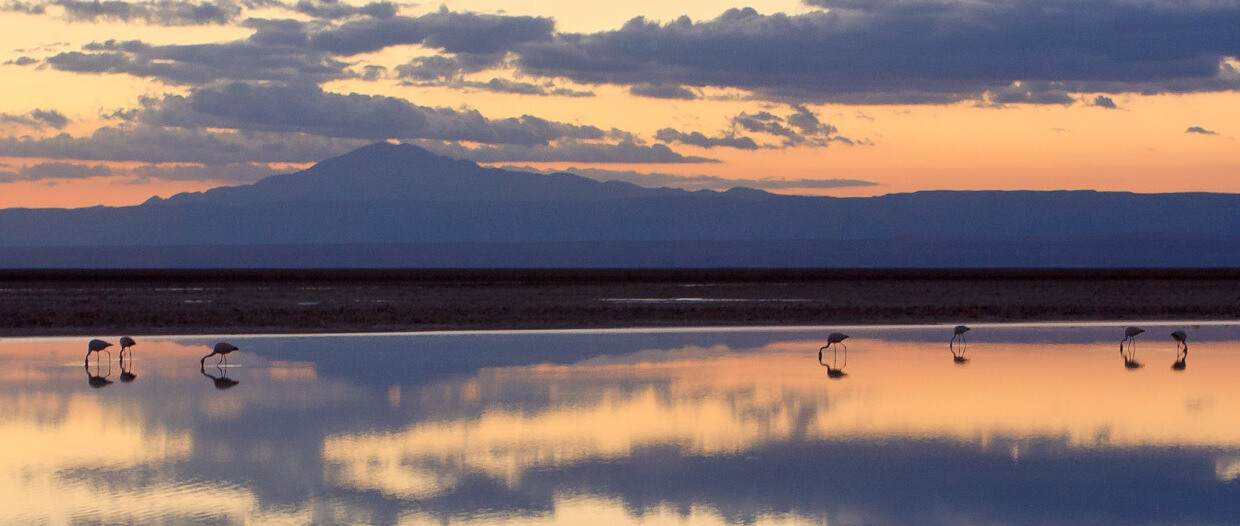Even ‘green’ technologies can have negative consequences
Lithium is powering the world’s electric vehicles, making the metal a key part in the quest to reduce carbon emissions. But the combination of lithium mining and climate change in the Andes Mountains may be negatively influencing flamingo populations, according to a study published today in the Proceedings of the Royal Society B.
The study focused on the effects that lithium mining and climate change are having on the shallow, saltwater lakes in the Chilean Andes where flamingos flock for feeding and breeding. The results show that two species of flamingos that breed only in these mountains have already lost 10 to 12 percent of their populations in just 11 years, but only at the lake affected by mining.
“Given how rapidly our demand for lithium is growing, there is a great need to understand what negative effects its production might be having on biodiversity and especially those species, like flamingos, that are important to local economies,” says Dr. Nathan Senner, a population biologist at the University of South Carolina and co-author on the paper.
Most of the world’s lithium is mined in the ‘Lithium Triangle’ of Chile, Bolivia, and Argentina. Meanwhile, the region is home to three species of flamingos—Andean, James’, and Chilean—two of which breed nowhere else in the world and which form the foundation of the region’s ecotourism industry.
The study, which also included scientists in Spain, Montana, and Chile, focused on five lakes in the in the Chilean Andes, part of the Lithium Triangle, including the Salar de Atacama, where Chile’s lithium mining is largely focused. The scientists saw that climate change is causing the lakes across the region to shrink. When a lake’s water levels are low, food levels go down, and so do the number of breeding flamingos. But the scientists found that flamingo numbers have not yet begun to widely decline. Instead, it is only in the Salar de Atacama that flamingo numbers have dropped.
For now, mining’s impact on the region is limited, and the overall flamingo population has not declined, likely because the birds can move to different lakes to find better conditions, Senner says. But that may not last, as lithium mining expands to meet international demand for the metal.
“The problem is that, in the Salar de Atacama, in addition to the changes caused by climate change across the region, lithium mining is reducing water levels and increasing disturbances for flamingos,” says Dr. Jorge Gutiérrez, an ecologist at the Universidad de Extremadura in Spain who led the study. “This means years with sufficient water for flamingos to breed occur less frequently and fewer flamingos are now present, even when there is enough water.”
The authors relied on 30 years of flamingo counts collected by citizen scientists and biologists from the Chilean government across the five saline lakes. They also used remote sensing data to identify changes in water levels and food availability within each lake across time. This provided the opportunity to investigate what climatic factors influenced water and flamingo food availability, as well as how water and food, in turn, influenced flamingo abundance.
Global demand for lithium has skyrocketed in recent decades for use in electric vehicles, cellular telephones and electronic storage devices. Production in Chile is therefore projected to triple by 2026 relative to 2018 levels and to expand to other saline lakes beyond the Salar de Atacama.
“The flamingo declines we documented in the Salar de Atacama may soon spread to the rest of the region,” says Dr. Cristina Dorador, a co-author and professor at the Universidad de Antofagasta. “Given that two of these flamingo species breed nowhere else in the world, this could lead to dramatic declines across their entire range and severely hurt the local ecotourism industry that relies on flamingos.”
In addition to Senner, Gutierrez, and Dorador, the researchers included Johnnie Moore at the University of Montana, Patrick Donnelly at the U.S. Fish and Wildlife Service and Juan Navedo at Universidad Austral de Chile.
Banner photo credit: Francesco Mocellin, CC BY-SA 3.0, via Wikimedia Commons.
